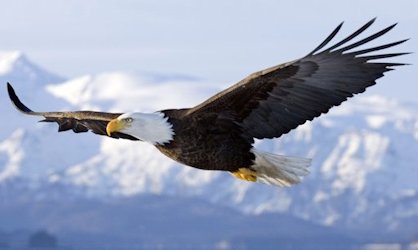
|
Gliding in Bird Flight Gliding flight is possible only when the forces of lift and drag are adjusted to be equal to the weight of the bird. For optimal gliding, a bird's wing must maximize lift and minimize drag.
With the exception of Hummingbirds, all birds glide to some extent when flying.
As a rule, the smaller the bird, the shorter the distance it can glide and the
faster it sinks. For example, a domestic pigeon descends about 33 feet during a
glide of approximately 295 feet; a Golden Eagle can glide 558 feet with the
same loss in height.
|
|
Gliding can be observed particularly well in game birds. A pheasant flushed from the ground ascends like a rocket with whirring wings, then glides for some distance down to the nearby woods. Only when it has too little momentum and is losing too much height does the bird speed up again with a few rapid wingbeats. Long gliding phases and short flapping phases alternate until the pheasant reaches cover. There it glides down to the ground and brakes by flapping against the direction of motion. This angle depends not upon the weight of the bird but rather upon the forces of lift and drag, though wing shape does have some influence. The speed of the glide, however, does depend to some degree on the weight of the bird -- a heavy bird with small wings will glide quickly, and a light bird with large wings will glide much more slowly. The distance traveled id affected to some extent by the height from which the bird started. |
|